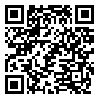BibTeX | RIS | EndNote | Medlars | ProCite | Reference Manager | RefWorks
Send citation to:
URL: http://tumj.tums.ac.ir/article-1-419-en.html
Normal
0
false
false
false
EN-US
X-NONE
AR-SA
MicrosoftInternetExplorer4
Background: Nerve
entrapment neuropathies are relatively frequent in the upper limb. Significant
costs related to resultant disability and treatment, and also simultaneous
occurrence of some of these syndromes can result in alteration in the treatment
approach. The aim of this study was to evaluate the frequency of these
syndromes, the rate of concurrence of carpal tunnel syndrome as the most
prevalent syndrome with others, related risk factors, and accordance of
clinical and electrophysiological findings.
Methods: In a retrospective study, data of
the 170
affected patients to these syndromes operated during a period of 10 years in a
referral center were searched using recorded documents. Information about patient's gender, age, occupation and
associated co-morbidities, clinical and surgical findings and their accordance
to the EMG-NCV findings, and also concurrence of these syndromes
were assessed.
Results: Patients' range of age was 10-91 year (mean:
48.09
year) and 74.5% of them were female. In this study carpal tunnel and
cubital tunnel syndrome were the most frequent (81.7% and 15.8%
respectively). In 23.5% of patients with carpal tunnel syndrome,
electrophysiological findings were negative but there was no false positive
result. Concurrent carpal tunnel syndrome with other syndromes were found in three
cases of cubital tunnel syndrome, two cases of thoracic outlet syndrome and one
case of Guyon's canal syndrome.
Conclusion: Constellation of symptoms, physical examination and electrophysiologic-al
findings altogether should be considered for correct diagnosis of nerve
entrapment syndromes in the upper extremity. Simultaneous entrapment in the
other regions of the same nerve or other nerves in the same extremity is a
probable condition
| Rights and permissions | |
 |
This work is licensed under a Creative Commons Attribution-NonCommercial 4.0 International License. |





